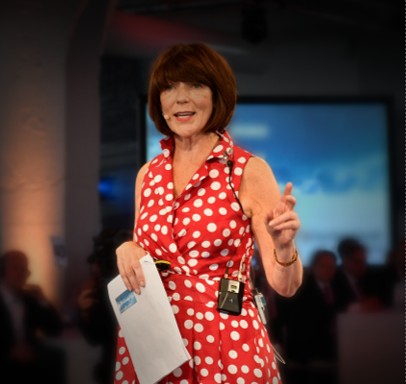Mon 27 Sep 2021

Unity is the theme of this year's National Inclusion Week – and that's precisely the core value that the latest Workday report into diversity and inclusion found to be the key to foster a culture of conscious inclusion at work.
The National Inclusion Week (27 September-3 October) is a global initiative that seeks to raise awareness of inclusion in the workplace. Organisations across the world will be hosting activities to engage their staff around conversations that put inclusion in the spotlight.
But what do we mean by inclusion at work? And what organisations can do to create an inclusive culture in the workplace?
Looking at the results from the Workday report, we can agree that we are at a pivotal point. There has never been a better time to look closer into the topics of diversity, equity and inclusion than now.
The Covid-19 era we live in is characterised by dramatic changes – the pandemic has highlighted the inequalities that exist in our society. As we embark upon the celebrations of the National Inclusion Week, conversations about inclusion at work are likely to be framed around the climate of transformation that we're all experiencing. For example, how does inclusion at work look like in the context of hybrid workplaces and flexible hours?
Latest findings
Workday, an on‑demand financial and human capital management software company, surveyed 2,217 HR professionals and business leaders across the UK and Europe.
The survey, conducted in the spring, found a growing recognition of clear business drivers for equity, diversity and inclusion (ED&I). And unsurprisingly, given the post-pandemic times we live in, more than 40% of respondents identified improving staff wellbeing as a driver and a priority for organisations.
And while Workday's The State of ED&I in Europe report contains many positive findings related to the sentiment and the importance of diversity and inclusion at work, it also reveals the need for more progress.
On the positive side, we now know that most people across the UK and Europe believe their executive teams understand the importance of ED&I – 84% of the surveyed organisations are collecting employee data to help monitor equity, diversity and inclusion.
However, one-third of organisations in the UK and Europe don't have an ED&I strategy. "Of the more than 2,200 companies that we queried, more than 90% say that they are running at least one activity in the space of ED&I," Workday Solutions Marketing Daniela Porr revealed in this podcast.
Porr noted that organisations have an opportunity to take these efforts even further. "It's time to take [ED&I] from a lot of actions to strategic and systematic action," she said.
The Workday report is yet another research proving that taking an employee-centric approach is paramount to foster inclusion at work. It found that one-third of respondents feel that more leadership and commitment from the top is needed. And 32% believe that greater engagement and buy-in from the staff is required.
"You cannot succeed with ED&I without taking your staff on the journey," said Porr. She explained that when organisations truly listen and truly understand the sentiment, they are able to build a D&I strategy, linking it back to what employees really need.
Indeed, the Workday survey found a correlation between the existence of a dedicated cross-functional team outside the HR function and increased levels of innovation, business performance and staff engagement.
How to foster conscious inclusion at work
A sign of the changing landscape in the D&I space is the fact that equity, diversity and inclusion are mainstream concepts. A decade ago, one would have spent moments bringing up statistics to justify the business case for D&I in the workplace.
Today, most people agree that diversity and inclusion activities are good for business and for people. Now, the diversity and inclusion challenge is on converting the theory into action.
Speaking at this year's conference Overcoming Unconscious Bias, Angela Peacock, founder and chief executive of D&I training consultancy PDT Global, encouraged organisations to watch out for three levers to foster inclusion at work. The first one is the language.

Peacock (pictured) reminded us how the D&I space has gone through word after word in a move to define the destination. In the beginning, it was diversity, then it was added inclusion, and now belonging has gained traction as the new buzzword. "It's not more words we need; it's practical ways to move forward," she said.
She argued that we cannot spend our time thinking that diversity at work is the panacea if what's going on outside is toxic – the bias, the hidden microaggressions, and the kind of things that you can't quite pick out, but you know it's there.
Peacock also reminded us that 60% of the people we're trying to get behind diversity initiatives believe that if they embrace it, they are going to get overlooked for their next promotion in favour of a diverse candidate.
So, how do you get the buy-in from top leadership and staff? Peacock explained that organisations should define their D&I journey in a way that you can measure it and hold people accountable for it.
For Peacock, such a definition could be the following: "Creating an environment where everyone with the capability to excel can do so."
She also explained that embedding this definition in the performance management system is one way to make people accountable for it. "It drives a heap of action, a heap of commitment and keeps it going," said Peacock, noting measurement comes quite simply by asking: what have you done to drive inclusion over the past six months?
The second lever is defining the business case for your D&I efforts. Peacock recognised that we've been banging on for years that inclusive organisations have more problem-solving capacity, make better decisions, have increased engagement, and so forth. However, she argued that one could only achieve an inclusive culture when managers are able to verbalise their own business case for inclusion.
"It's really quite technical,” said Peacock. “Get managers to identify specifically how the achievement of their business goals for the year will go faster or will get held up if they do or don't have an inclusive environment, and what are the impacts on those objectives if they succeed," she explained.
Look at your data
It is very easy for a leader to create an inclusive environment in a homogenous team. Hence it's important to look at your diversity data – and this is the third lever to use.
Peacock explained that organisations can use their annual diversity survey to look at how people feel about inclusion. "Then you can take your diversity data with your inclusion data to find out whether managers are managing a diverse team and continuing to grow on the inclusion quotient,” she said. “Those two things together are beautiful," she enthused.
For Peacock, looking at hiring and retention data allows organisations to identify what she called 'talent velocity'.
Put simply, it's about looking at a control group – or what you would call the privileged group – and looking at one of the underrepresented groups in the organisation over the longest period that you possibly can.
Peacock explained that this method enables organisations to see how one group does better than the other, and where the pinch points are. And you will be able to treat the pinch points accordingly.
She explained: "The best thing you can do once you've got that information, and you've cut that data by manager or by department, is to scale it up and look at predictive data. You will be able to see the impact on the business outcome if you carry on doing what you're doing for the next five years, for example."
And while the focus has been on measuring output, Peacock encouraged organisations to start measuring the input – who is doing the work after the training programme, who is going the extra mile for achieving inclusion.
Peacock said that by pulling these three levers – language, business case, and data – together in unity, organisations would have greater chances to make steady progress in their inclusion journey.
Gamiel Yafai, managing director at Diversity Marketplace, will be speaking at the upcoming Fostering Conscious Inclusion at Work event on 4 November. The online event will offer hands-on advice on creating a shared culture of belonging where everyone can thrive.
Key points to discuss include:
- Educating staff to embed inclusivity and respect for difference into your organisational DNA
- What is micro-behaviour? Understanding and addressing behaviours that can marginalise colleagues
- Beyond by-standing: Instilling and 'upstander' ethos in your team
- Securing buy-in into the benefits of diversity, equity and inclusion at all levels
If you’re interested in gaining the skills to foster conscious inclusion at work, please visit the event website, explore the agenda, and book your place.
View all news